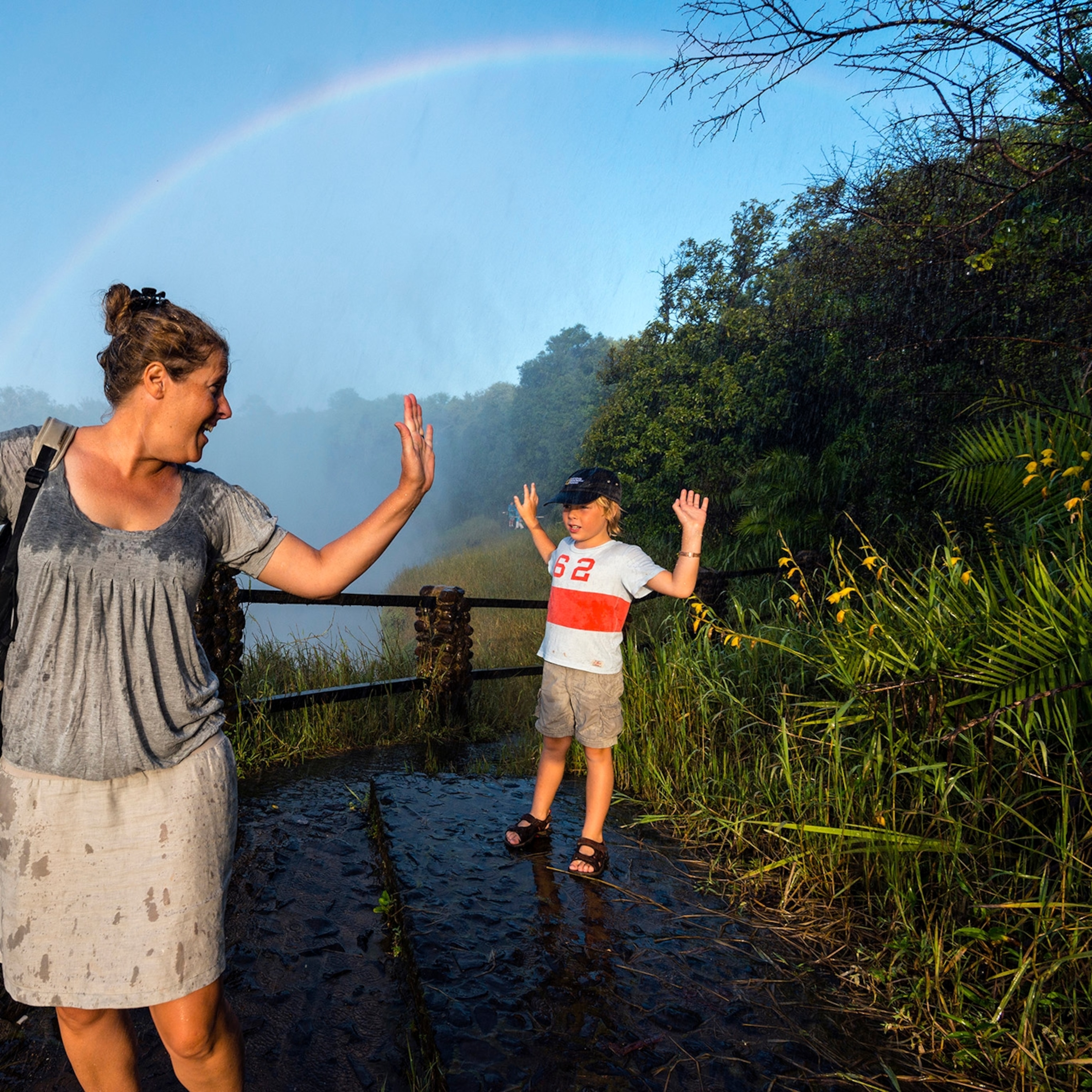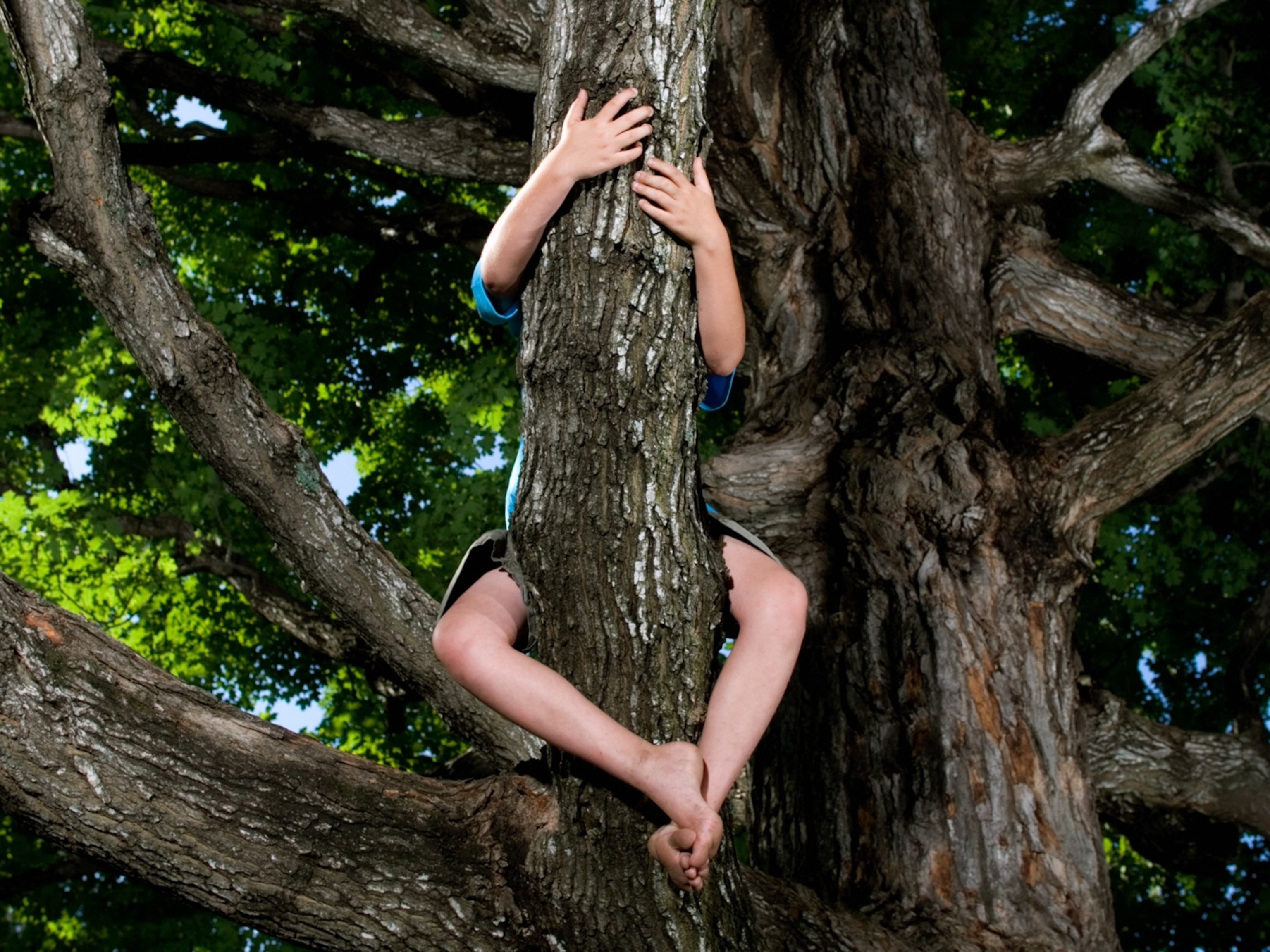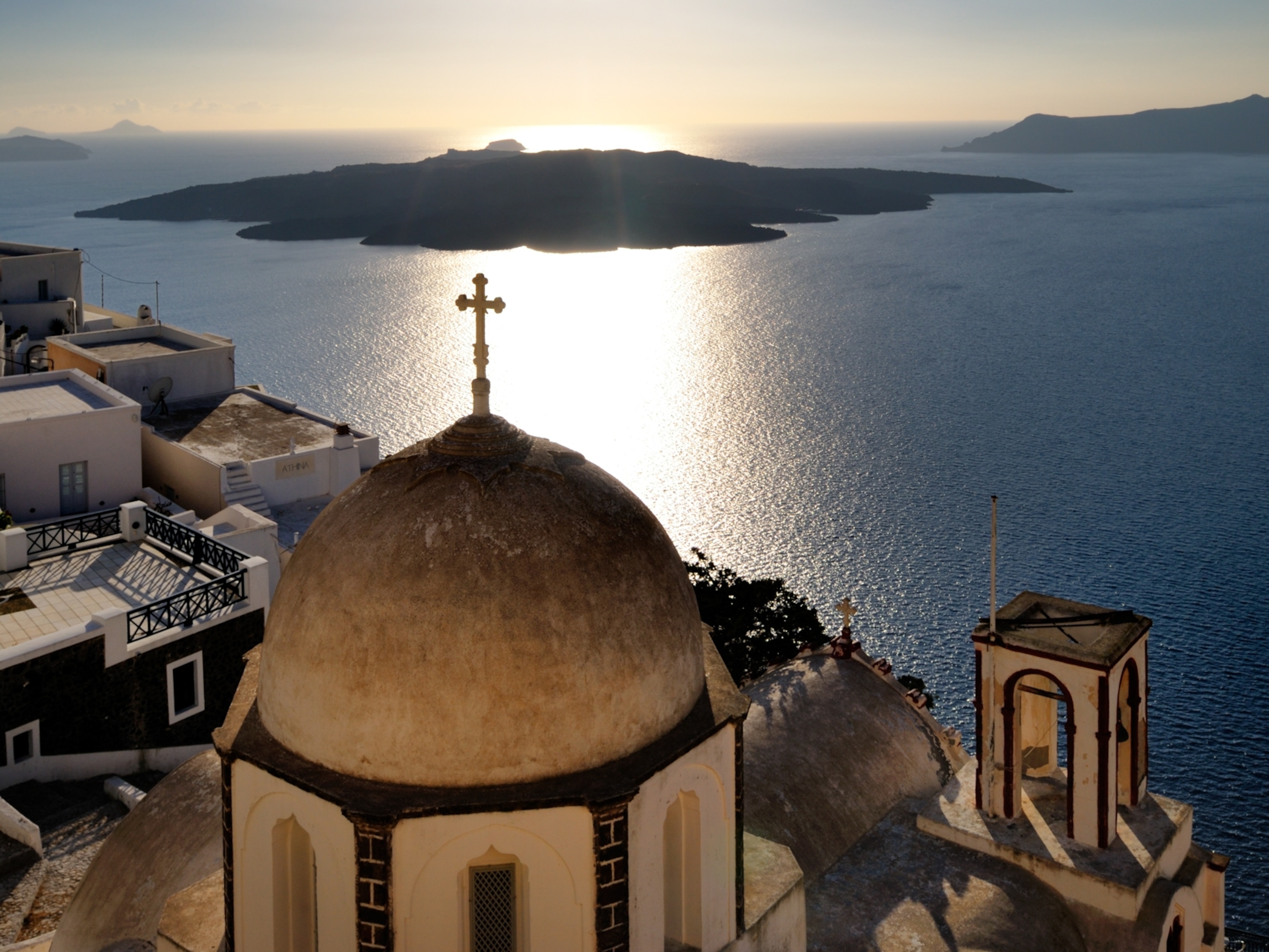
Where Young Girls Are Worshipped as Living Goddesses
Worship of the Kumari, Living Goddesses who represent the divine, has increased post-earthquake to make amends for offending Mother Earth.
Imagine if President Barack Obama or British Prime Minister David Cameron had to kneel at the feet of a young girl, as the President of Nepal does. In her new book The Living Goddess British author Isabella Tree sets off in search of the Kumari of Nepal: young girls who embody the creative, female energy, or Shakti, which the people of Nepal believe nourishes and protects them.
As she meets with former Kumari and visits temples associated with them, she discovers that, despite earthquake and revolution, the cult of the Living Goddess is stronger than ever. (Read about some Nepalis interpreting the recent earthquakes as divine retribution.)

Talking from her home at Knepp Castle in England, Tree describes her feelings when she first glimpsed a Kumari as a young woman; how Nepal’s recent earthquake left the house of the Living Goddess untouched; and how the rewilding project she and her husband are undertaking on their estate connects to her experiences in Nepal.
You first saw the Living Goddess when you were a young woman living in Kathmandu with your future husband. Take us back to that moment.
We literally stumbled on her by chance. I was 18, and with Charlie, who’s now my husband, and two other friends.
We rented a flat on what was known as Freak Street for the summer, intending to hang out at the tail end of the hippie era. What we hadn’t realized was that our flat was yards away from this amazing building, which is the residence of the Living Goddess.
One day, shortly after we arrived, we followed some women who were carrying puja plates into this amazing complex of temples. We ducked our heads beneath this little entrance, which is carved with human skulls, and entered a courtyard. There was a tour guide chatting to some tourists, saying, “If you are very patient and very quiet, the Living Goddess may appear for you at her window.”
We didn’t know what to expect. Then, suddenly, without warning, this amazing face appeared at the third floor window. A child, about seven- or eight-years-old. She had red lipstick and her eyes were outlined with kohl all the way to her temples, her hair was piled up on her head, and she was wearing red. She always wears red. She gazed down on us with this imperious stare.
It felt like the roles were completely reversed. She was the one with the power. Her face was also completely expressionless. The Living Goddess never smiles because to smile is an invitation to heaven and you will die.
Your analysis of the difference between worshipping a child and an adult is fascinating. What does it mean, culturally, to kneel at a child’s feet and ask for a blessing?
It’s one of the things that I found most striking of all, this idea of worshipping a child, particularly a girl. Throughout much of Nepalese history, the King of Nepal has knelt at these little girls’ feet—nowadays it’s the president—in order to receive permission to rule the country.
This tradition is mirrored on all sorts of other levels in Newar society. A family will worship the littlest girl of their household whenever there’s a big festival. They’re dressed like Kumaris, with their hair done up in a topknot and their eyes made up and lipstick, and they’re all dressed in red. Everyone in the family—grandfathers, fathers, brothers, sisters, mothers, grandmothers—kneels at this little girl’s feet.
When we took my daughter to Kathmandu, she loved the whole idea and said, 'Does this mean if I was a Kumari in England, I’d have my headmaster kneeling at my feet?'
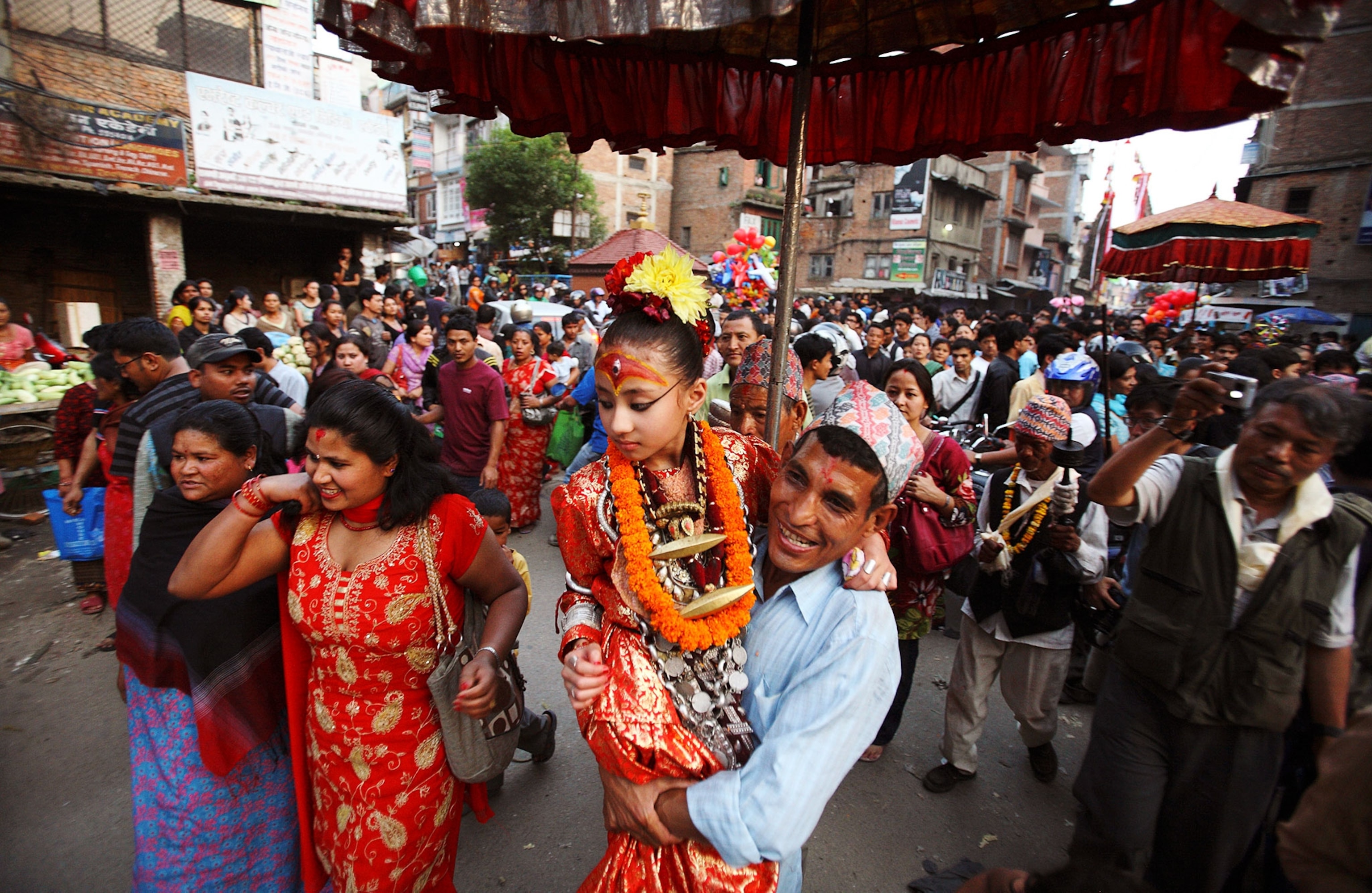
It has a huge resonance, because traditionally in orthodox Hindu families, the women in the household will kneel at the feet of the man. This is the inverse of that and reminds men to revere and respect women and children.
When we took my daughter to Kathmandu, she loved the whole idea and said, “Does this mean if I was a Kumari in England, I’d have my headmaster kneeling at my feet?” [Laughs] She thought it was the most fantastic idea! Imagine if David Cameron and Barack Obama had to kneel at the feet of little girls!
Nepal has been torn by a Maoist insurgency in recent years. Has that eroded the power of the Kumari?
I assumed it would, and that was one of the catalysts for the book. After the royal family massacre in 2001 it looked like the Maoists were going to take advantage of the situation and move into the valley, which they did. Much to everyone’s surprise, they were eventually voted in as a majority in the government, in a free and fair election. They had sworn themselves to a secular state, though and tried to stop the Festival of Indra Jatra which is this big festival where the Kumari is pulled around the old city walls in a huge golden chariot.
The Maoists wanted to put a stop to that but when the people heard that the Maoists were going to stop Indra Jatra, tens of thousands of people took to the streets to protest. The Maoists capitulated and acknowledged the Living Goddess’ power. Now the President, Maoist or whatever he is, kneels at the Living Goddess’ feet in order to receive her blessing and be accepted to rule the country.
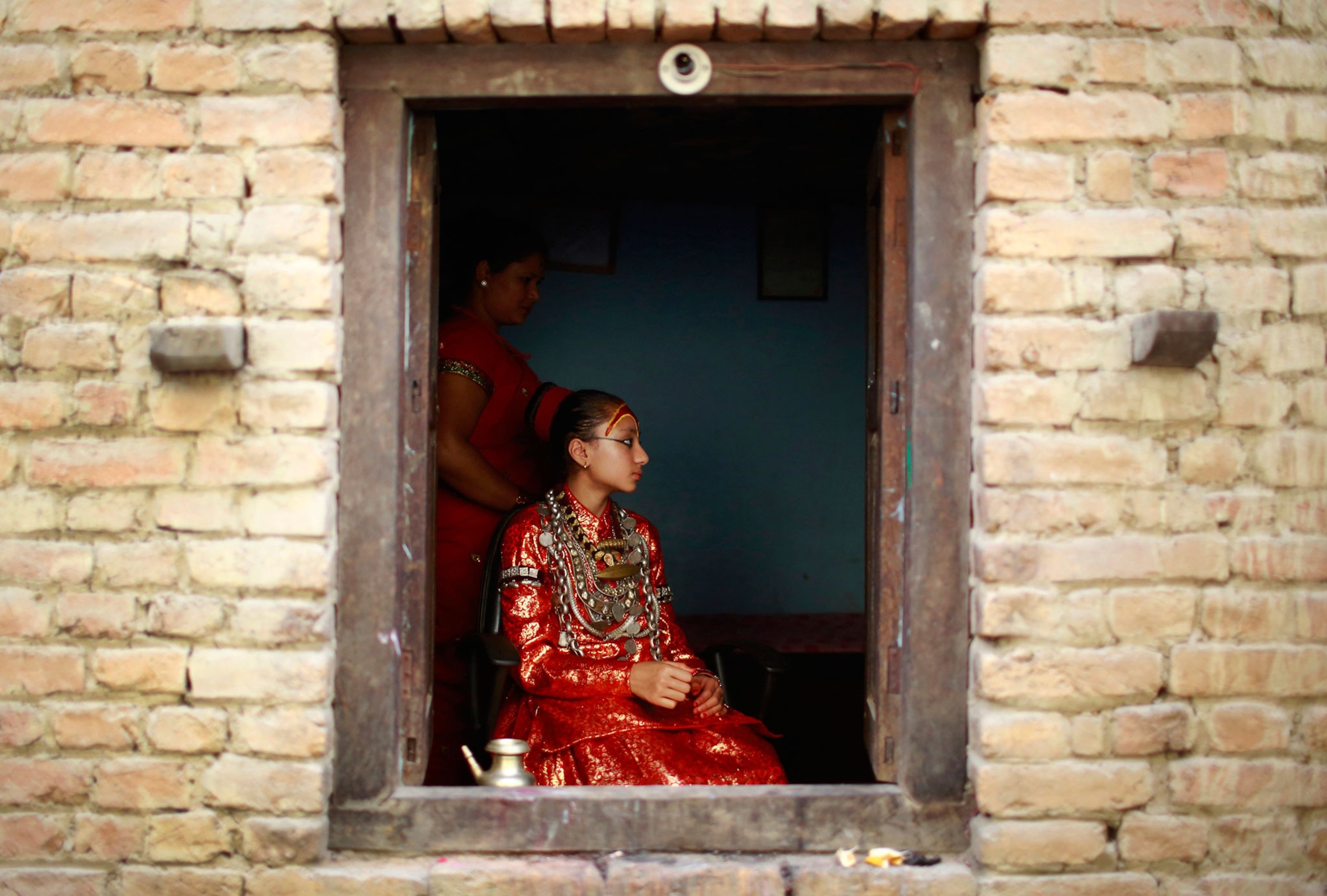
A complaint of abuse was made about these young girls. Is it right to take a small child away from her parents and isolate her in this way?
It’s a very thorny question to come at from a Western angle. A little child cloistered in a palace, whose feet can’t even touch the ground, and who only goes out on festival occasions about 13 times a year? You wonder, is this tantamount to child abuse? But you can’t disassociate it from the religious feeling that this is the girls’ karma. They were born to be Kumaris. It is their destiny to be the Living Goddess and a huge blessing. It is very similar to how a little boy is found who is the incarnation of the Dalai Lama.
During the course of my research, I started meeting ex-Living Goddesses and finding out what their experiences were. And none of the ex-Living Goddesses I met expressed regret for how they had spent their childhood. All of them, to a woman, said that if they had a daughter, they would be happy and honored for her to be a Living Goddess.
There’s no sense there that it was a horrible experience. Quite the reverse, they felt that this was something that blessed them and their families, and was important for the good of the nation.
The Living Goddess embodies the creative female energy, or Shakti, which protects and nourishes the nation and the people of Nepal. By extension, it’s an important tradition for the whole world because this nurtures the female spirit and brings reverence for the divine feminine.
The earthquake put Nepal front and center in the news last month; you had friends affected by the quake. How did the Newar and Nepalese people interpret the quake?
It was a Saturday, which is a Nepali day of worship, so the Living Goddesses were mostly on their thrones at the time of the earthquake. Everyone was panicking, but the Kathmandu Kumari said, “It’s fine. It will be fine.” They knelt in front of her and prayed.
During the quake, all those huge, beautiful temples I had known as a teenager came crashing down right outside the Kumari Palace’s door. Yet, the Kumari’s Palace was not missing one tile from the roof. It’s absolutely extraordinary and hugely significant and symbolic to the people of Nepal.
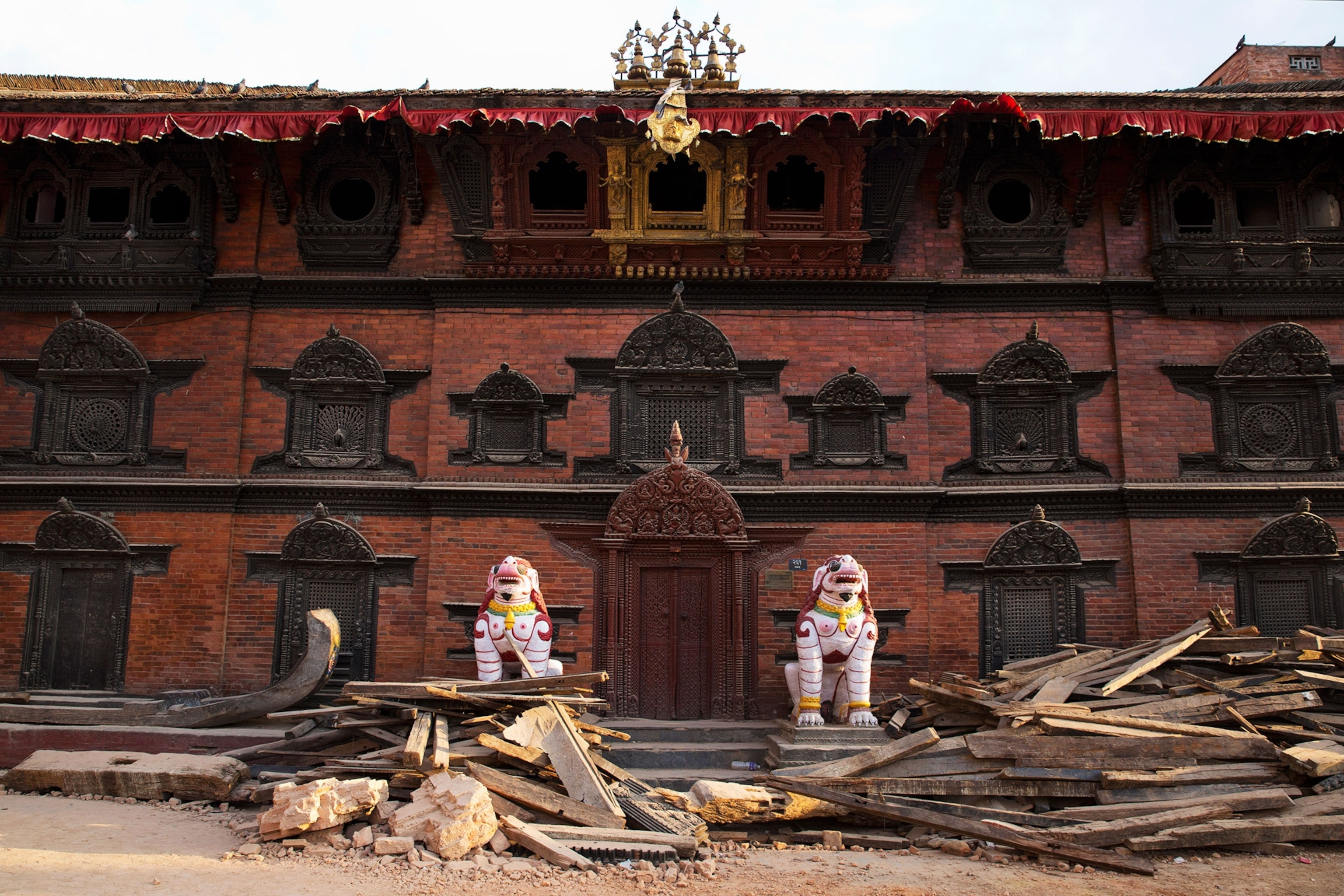
There has been deep anxiety that people are losing their respect for the gods and are becoming more self-centered and less compassionate. This is still a very Buddhist-infused society. Pious Newars still pray every day for the good and happiness of all sentient beings.
But modern culture is creating more materialistic, more selfish ways of life. People are less willing to take part in community festivals and activities. They are less meticulous about ritual. So they see the earthquake as an expression of Mother Earth being unable to bear the burden of the sins that humanity is heaping upon her.
As a result, there’s an upsurge of devotion to the Living Goddess to try and make amends for this terrible disaster. Most beautifully, the Newar women are pressing their thumbs into the surface of the Earth in order to take up some of the Earth’s burden into their own bodies.
How did the experience affect your own religious beliefs?
I would probably describe myself as an agnostic. I’m not a religious person, though I have huge respect for people who are, perhaps even envy. It has certainly changed my way of looking at the world. Kneeling at the feet of a Kumari, which I’ve done now on many occasions, is a profoundly changing experience. It has a psychological impact on you: that surrendering of your adult assumptions of control and submission of ego.
It also has changed the way that I look at my own culture. I never particularly considered myself a feminist but in the West we’ve lost our connections with our Mother Goddess traditions because we live in a patriarchal world. Equal rights for women are grafted on masculine rootstock. It’s not real, deep-seated, genuine equality.

Did you ever take part in the rituals?
I had resigned myself to the fact that I would never personally meet the Kumari of Kathmandu, because it’s taboo for a foreigner ever to meet her. You can take photographs of her outside her house on festival occasions like anybody else, but you can never see her inside her house.
Then, one day, my family and I were invited by the caretakers of the Kumari House to a small, Newar ceremony for women and children. A few Newar families filed into the Kumari House and the Living Goddess came down and sat in the courtyard. They all bowed to her and presented her with gifts. At the end of this lovely procession, which was very joyous and wonderful to witness, we were invited to come and bow to her feet. It was very moving, especially for my children, who were still young and had grown up with my writing and talking about the Living Goddess.
We can’t let you go without you telling us about the amazing rewilding project you are undertaking at Knepp Castle, where you live. Is there any connection?
I think there is. My husband inherited a family estate, which had been farmed intensively, even though it’s poor land: very heavy Sussex clay. So, a few years ago we decided to change our way of looking at the land. We started working with it rather than against it and began a rewilding project using different types of grazing animals to drive habitat creations.
We now have this unbelievable mosaic of habitats, which range from scrub to open grassland, water meadow and copses. The biodiversity has completely erupted. We now have two of the UK centers of nightingale populations; a breeding hotspot for turtledoves; purple emperor butterflies; and all sorts of rare species that are disappearing everywhere else in the country.
The Newars have a great empathy with the land. Plowing, for example, is taboo. To plow in Nepal is like scratching your nails down your mother’s face. We have stopped plowing, too. We’ve given our own land a bit of space to breathe and live again.
Simon Worrall curates Book Talk. Follow him on Twitter or at simonworrallauthor.com.


